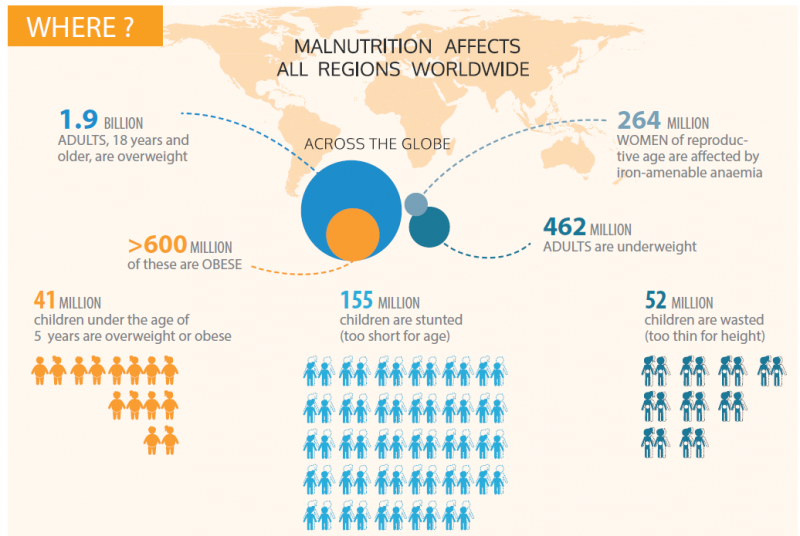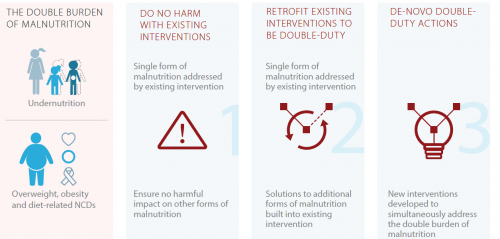Common drivers and solutions to undernutrition and obesity

This week the World Health Organization in Geneva released two new policy briefs focused on the Double Burden of Malnutrition and Double-duty actions for nutrition.
Defined as the coexistence of undernutrition along with overweight, obesity or diet-related NCDs, within individuals, households and populations, and across the life-course, the double burden of malnutrition now grips many nations worldwide and presents a challenging new nutrition paradigm for policy makers and public health. This first brief outlines the three scales (individual, household and population) and many determinants of the double burden. The purpose of this policy brief is to increase attention to, and action for cost-effective interventions and policies to address the double burden of malnutrition within the UN Decade of Action on Nutrition – and, through this, to contribute to achieving the Sustainable Development Goals of ending all forms of malnutrition (SDG2) and ensuring healthy lives and well-being for all at all ages (SDG3).
The second complementary, standalone brief introduces and explains the concept of double-duty actions. This policy brief sets out the potential for double-duty actions to contribute to this intensified effort and attention on the double burden by addressing both sides of malnutrition through common interventions. Defined as programmes and policies that have the potential to simultaneously reduce the risk or burden of both undernutrition (including wasting, stunting and micronutrient deficiency or insufficiency) and overweight, obesity or diet-related NCDs (including type 2 diabetes, cardiovascular disease and some cancers) – double-duty actions leverage the coexistence of multiple forms of malnutrition and their shared drivers to offer integrated solutions. The brief explains that double-duty actions are not necessarily new actions, but often actions that are already employed to address single forms of malnutrition, with the potential to address multiple forms simultaneously.

In addition, the brief sets out three levels of achieving double-duty, these are:
- Do no harm – to assess and ensure that current initiatives (policies, programmes etc.) aimed at one form of malnutrition are not inadvertently increasing the risk of other forms of malnutrition or NCDs;
- Retrofit existing nutrition interventions and policies – to look at what actions are already being implemented and ask "do they or can they positively and simultaneously influence other forms of malnutrition?"; and
- Develop de-novo actions to act on the double burden – development of new actions designed specifically to achieve double-duty.
Combating malnutrition is one of our greatest global health challenges. Together, these briefs reinforce the notion that with renewed focus and increased investment in the double burden and double-duty actions, we can tackle these challenges utilising existing and novel solutions.
More information: For more information, see www.who.int/nutrition/en/
This story is republished courtesy of PLOS Blogs: blogs.plos.org.



















